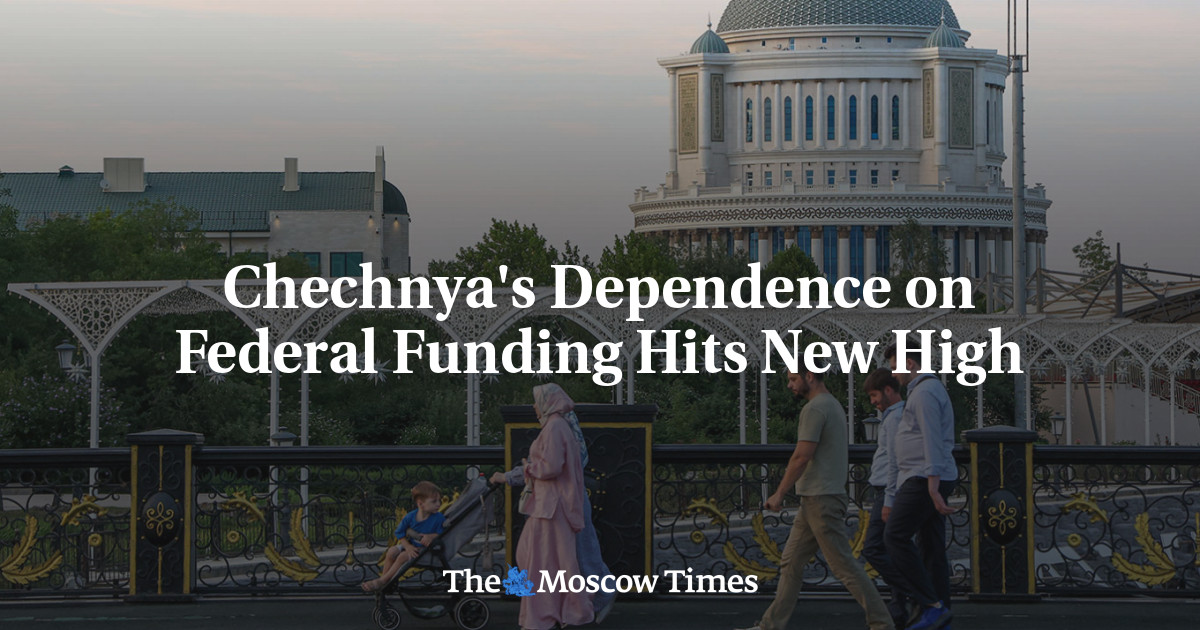
The republic of Chechnya’s financial dependence on the Russian federal government remains the highest in the country, with over 92% of its 2024 expenditures financed by Moscow.
The figures underscore the North Caucasus republic’s fragile economy and ongoing reliance on Kremlin support.
Total government spending across all levels in the republic reached 580 billion rubles ($7.3 billion) in 2024, up from 375 billion rubles ($4.7 billion) in 2021, according to calculations by the Ravenstvo Telegram channel, which analyzed data from the Federal Treasury.
The bulk of this funding, 149 billion rubles ($1.88 billion), came in the form of non-repayable transfers.
Grants and subsidies amounted to 95,000 rubles ($1,200) per Chechen resident, roughly double the national average of 48,500 rubles ($600).
Chechnya also received 150 billion rubles ($1.9 billion) from the federal budget for law enforcement and military forces.
The Kremlin continues to rely heavily on the republic to supply soldiers for its war in Ukraine, with the Akhmat special forces unit having reportedly sent over 50,000 fighters to the front.
Pension payments allocated to the region totaled 215 billion rubles ($2.72 billion), while an additional 26 billion rubles ($328 million) were provided as subsidies for the mandatory health insurance program.
In contrast, Chechnya’s own revenue amounted to just 37 billion rubles ($470 million) in 2024 — enough to cover only about one-fifth of its regional budget and a mere 6% of overall government spending in the region.
Despite its extensive federal support, Chechen officials regularly say the funding remains insufficient. Ahead of the 2024 budget, Chechen Prime Minister Muslim Khuchiev said the republic still lacks the resources necessary to develop critical social infrastructure and pay public-sector salaries.
Other heavily subsidized regions include the republics of Tyva (79% of budget from federal funds), Ingushetia (78%), Dagestan (72.8%) and Karachay-Cherkessia (68.2%), along with the occupied Kherson (76.8%), Donetsk (70.9%), Luhansk (65.4%) and Zaporizhzhia (67.3%) regions of Ukraine.
At the other end of the spectrum are wealthier regions like Moscow (8%), Sakhalin (9%) and Tyumen (10.7%), which receive only minimal federal subsidies.
Economically, Chechnya continues to lag far behind most of Russia. Its industrial output remains 55% below 1990 levels, and its gross regional product per capita in 2023 was the second-lowest in the country — more than four times lower than the national average.
Chechnya is also among the five regions with the highest poverty rates in Russia.




